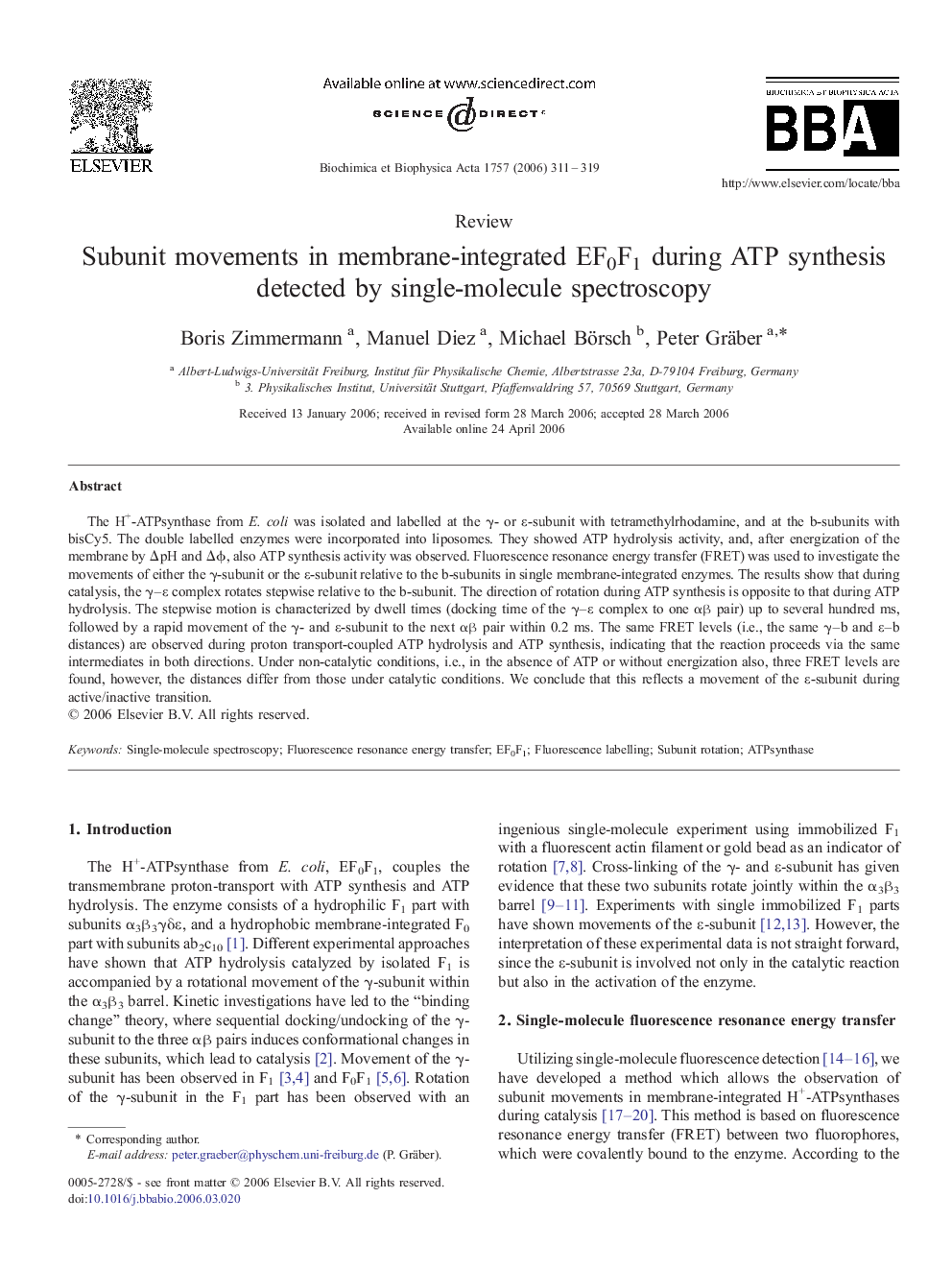| Article ID | Journal | Published Year | Pages | File Type |
|---|---|---|---|---|
| 1943694 | Biochimica et Biophysica Acta (BBA) - Bioenergetics | 2006 | 9 Pages |
The H+-ATPsynthase from E. coli was isolated and labelled at the γ- or ε-subunit with tetramethylrhodamine, and at the b-subunits with bisCy5. The double labelled enzymes were incorporated into liposomes. They showed ATP hydrolysis activity, and, after energization of the membrane by ΔpH and Δϕ, also ATP synthesis activity was observed. Fluorescence resonance energy transfer (FRET) was used to investigate the movements of either the γ-subunit or the ε-subunit relative to the b-subunits in single membrane-integrated enzymes. The results show that during catalysis, the γ–ε complex rotates stepwise relative to the b-subunit. The direction of rotation during ATP synthesis is opposite to that during ATP hydrolysis. The stepwise motion is characterized by dwell times (docking time of the γ–ε complex to one αβ pair) up to several hundred ms, followed by a rapid movement of the γ- and ε-subunit to the next αβ pair within 0.2 ms. The same FRET levels (i.e., the same γ–b and ε–b distances) are observed during proton transport-coupled ATP hydrolysis and ATP synthesis, indicating that the reaction proceeds via the same intermediates in both directions. Under non-catalytic conditions, i.e., in the absence of ATP or without energization also, three FRET levels are found, however, the distances differ from those under catalytic conditions. We conclude that this reflects a movement of the ε-subunit during active/inactive transition.
